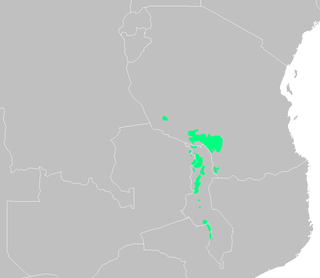 W
WChapin's apalis is a species of bird in the family Cisticolidae. It is found in Malawi, Tanzania, and Zambia. Its natural habitat is subtropical or tropical moist montane forest.
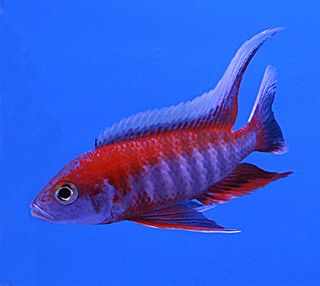 W
WAulonocara jacobfreibergi, the eureka red peacock, is a species of fish in the family Cichlidae. It is also known as Freiberg's peacock or fairy cichlid. There are several colour morphs including red or yellow. They generally can grow to around 15 cm in length.
 W
WAulonocara nyassae, known as the emperor cichlid, is a species of haplochromine Cichlid that is endemic to Lake Malawi in Africa. It has been recorded from the southeastern arm of the lake and may be preset in the southwestern arm. This species was known only from its holotype, which was collected at the turn of the century, until more specimens were collected in the 1990s.
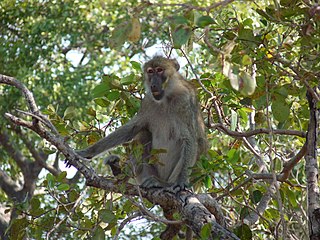 W
WThe Kinda baboon is a species of baboon present in the miombo woodlands of Angola, the Democratic Republic of the Congo, Zambia, and possibly western Tanzania. While the Kinda baboon was once thought to be a subspecies of the yellow baboon, it has recently been discovered to be distinct enough to merit status as separate species under the phylogenetic species concept.
 W
WCopadichromis azureus is a species of haplochromine cichlid. It is endemic to Lake Malawi where it is found in the country of Malawi.
 W
WCynotilapia axelrodi is a species haplochromine cichlid which is endemic to Lake Malawi where it occurs in Nkhata Bay and Chirombo Point, Malawi. The specific name honours the publisher Herbert R. Axelrod (1927-2017).
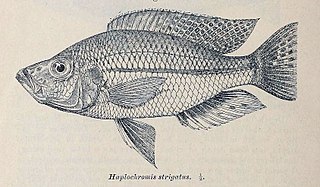 W
WDimidiochromis strigatus is a species of haplochromine cichlid endemic to Malawi. It was formerly placed in the genus Haplochromis and known as Haplochromis 'sunset' in the aquarium fish trade.
 W
WDocimodus johnstoni is a species of haplochromine cichlid. It is known from Lake Malawi, Lake Malombe, and the upper Shire River in Malawi, Mozambique, and Tanzania. This species has unusual feeding habits: it is reported to feed on fins of clariid catfishes. The specific name honours the British explorer, botanist, linguist and Colonial administrator, Sir Henry Hamilton Johnston, who presented the type to the British Museum.
 W
WGephyrochromis moorii is a species of haplochromine cichlid. It is endemic to Lake Malawi where is found exclusively over open sand areas, where it lives in small groups numbering between three and seven individuals The males are not strictly territorial but defend feeding sites from other males. The specific name honours the English cytologist and biologist John Edmund Sharrock Moore (1870-1947).
 W
WHyperolius argus, known under common names Argus reed frog, Argus sedge frog, and Boror reed frog is a hyperolid frog found in the eastern coastal plain of Africa from southern Somalia through Kenya, Tanzania, Mozambique, Malawi, Zimbabwe to KwaZulu-Natal in eastern South Africa.
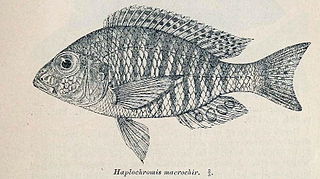 W
WLethrinops macrochir is a species of cichlid endemic to Lake Malawi where it prefers shallow waters with a sandy substrate. This species grows to a length of 13 centimetres (5.1 in) TL.
 W
WLethrinops macrophthalmus is a species of cichlid endemic to Lake Malawi where it is known to occur in the Nkhotakota area. It prefers habitats with patches of Vallisneria. This species grows to a length of 12 centimetres (4.7 in) SL.
 W
WLethrinops micrentodon is a species of cichlid endemic to Lake Malawi. This species grows to a length of 11.5 centimetres (4.5 in) TL. It can also be found in the aquarium trade.
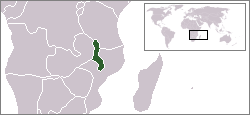 W
WThis is a list of butterflies of Malawi. About 488 species are known from Malawi, 16 of which are endemic.
 W
WMaylandia callainos is a species of cichlid endemic to Lake Malawi where they only occurred naturally in Nkhata Bay though it has now been introduced to other locations. This species can reach a length of 8 centimetres (3.1 in) SL. It can also be found in the aquarium trade. Maylandia callainos was formally named Pseudotropheus callainos and is often referred as such in the scientific literature.
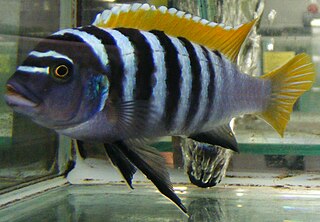 W
WMaylandia emmiltos is a species of cichlid endemic to Lake Malawi where it is only known from the Mpanga Rocks near Chilumba. This species can reach a length of 8.4 centimetres (3.3 in) SL. It is also found in the aquarium trade.
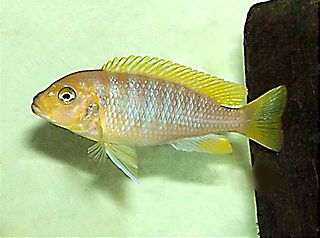 W
WMaylandia hajomaylandi is a species of cichlid endemic to Lake Malawi where it is only known from around Chisumulu Island. This species can reach a length of 12 centimetres (4.7 in) TL. It can also be found in the aquarium trade. The specific name honours the cichlid enthusiast and author about aquaria Hans Joachim Mayland, who died in 2004,
 W
WMaylandia pyrsonotos is a species of cichlid endemic to Lake Malawi where it occurs naturally around Nakatenga Island and has been introduced to the waters around Maleri Island. This species can reach a length of 7.7 centimetres (3.0 in) SL. It is also found in the aquarium trade.
 W
WMchenga inornata is a species of fish in the family Cichlidae. It is endemic to Malawi. Its natural habitat is freshwater lakes.
 W
WMelanochromis loriae is a species of cichlid in the Cichlidae endemic to Lake Malawi. This species can reach a length of 12.5 centimetres (4.9 in) TL.
 W
WMylochromis plagiotaenia is a species of cichlid endemic to Lake Malawi where it is known from the southern arms of the lake. This species can reach a length of 11 centimetres (4.3 in) TL. This species can also be found in the aquarium trade.
 W
WNimbochromis fuscotaeniatus is a species of cichlid endemic to Lake Malawi and Lake Malombe. Males of this species can reach a length of 25 centimetres (9.8 in) TL while the females grow to 20 centimetres (7.9 in) TL. It can also be found in the aquarium trade. It is an ambush predator and feeds on smaller cichlids. Females are smaller than males and a brownish color, while males are larger and blue in color. The species is a mouthbrooder that spawns readily in the aquarium.
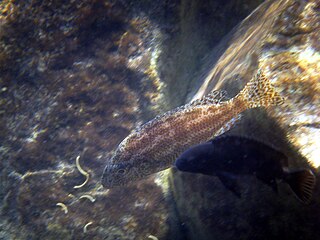 W
WNimbochromis linni is a species of cichlid endemic to Lake Malawi where it prefers areas with rocky substrates, though it occasionally enters intermediate habitats. This species can reach a length of 25 centimetres (9.8 in) TL. It can also be found in the aquarium trade. The specific name honours D. Wayne Linn of the Fisheries Office in Malawi, whose help to Herbert R. Axelrod made his field trip to Lake Malawi possible.
 W
WNyassachromis breviceps is a species of cichlid endemic to Lake Malawi where it is only found in the southern part of the lake. It prefers areas with sandy substrates but needs a supply of small pebbles for nest building. This species can reach a length of 15.4 centimetres (6.1 in) TL. This species was last observed in Lake Malawi in 1997 and is thought that it may be extinct, caused by overexploitation by artisanal fishermen.
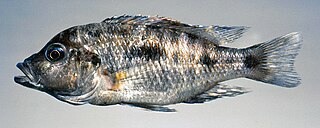 W
WOtopharynx brooksi is a species of cichlid endemic to Lake Malawi. This species can reach a length of 15 centimetres (5.9 in) TL. This species can also be found in the aquarium trade. The specific name of this fish honours John Langdon Brooks (1920-2000), an evolutionary biologist at Yale University.
 W
WOtopharynx lithobates is a species of cichlid endemic to Lake Malawi. This species can reach a length of 16 centimetres (6.3 in) TL. This species can also be found in the aquarium trade. As O. walteri this species was known as Aristochromis deep in the aquarium trade.
 W
WOtopharynx tetraspilus is a species of cichlid endemic to Lake Malawi where it is only known from the southern end of the lake. This species can reach a length of 15.6 centimetres (6.1 in) TL. It can also be found in the aquarium trade.
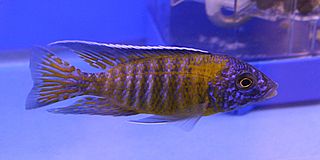 W
WThe pale Usisya aulonocara is a putative species of haplochromine cichlid endemic to Lake Malawi.
 W
WSciaenochromis fryeri is a species of cichlid endemic to Lake Malawi where it is found along the rocky coastal areas at depths of from 10 to 40 metres. It can reach a length of 11.5 centimetres (4.5 in) SL. The specific name honours Geoffrey Fryer (b.1927) who was Fisheries Research Officer, Joint Fisheries Research Organisation of Northern Rhodesia and Nyasaland.
 W
WThe slender tail hap, is a species of fish in the, tribe Haplochromini part of the subfamily Pseudocrenilabrinae of the family Cichlidae.
 W
WThe sulfurhead aulonocara or sulfurhead peacock is a species of haplochromine cichlid which is endemic to Lake Malawi in the country of Malawi and has only been observed on West Reef and Eccles Reef. It is threatened by collection for the aquarium trade and this has caused a 70% reduction in numbers. In this mouthbrooding species, the eggs are cared for by the females only, and it is found over mixed sand and rocky areas where they hunt small invertebrates in the sand. It closely resembles the blue orchid aulonocara though it develops a yellow blaze across its dorsal In the past these two taxa have been considered to be subspecies. The specific name honours Hans-Joachim Mayland, an author on cichlids and a fishkeeper, brought the species to the attention of Ethelwynn Trewavas.
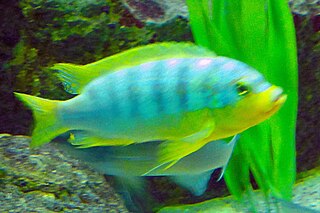 W
WWilliam's mbuna, also known as ice blue zebra mbuna or ice blue zebra or the Pseudotropheus ice blue among the aquarium enthusiasts, is a species of cichlid fish endemic to Lake Malawi where it is only found at Makokola in the southeastern arm of the lake. This species can reach a length of 13.4 centimetres (5.3 in) TL. It can also be found in the aquarium trade. The specific name honours the German ornamental fish importer Alfons Greshake.